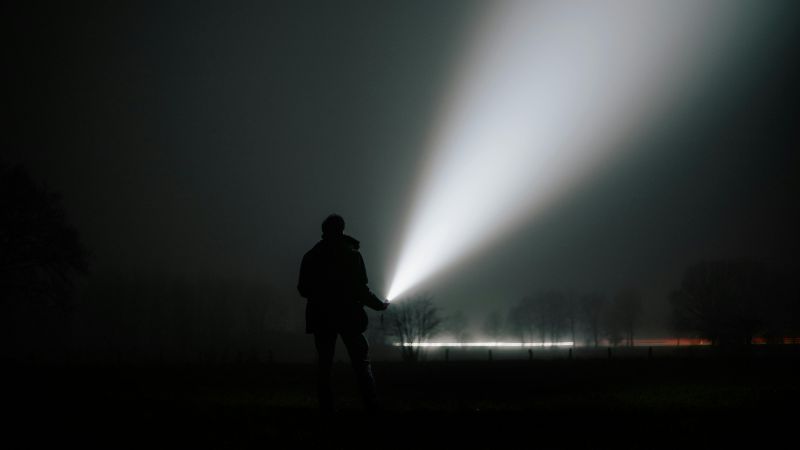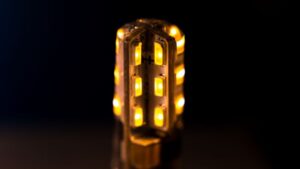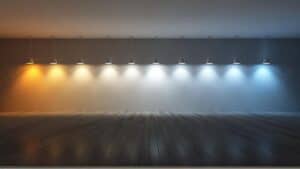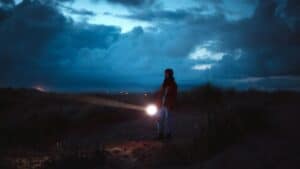Tactical flashlights offer powerful brightness and durability. They are popular for everything from everyday tasks to self-defense. However, their advanced features often lead to a critical question: Are they legal to own and carry?
I. What Makes a Flashlight “Tactical”?
The term “tactical” gets thrown around a lot, but what does it actually mean when it comes to flashlights? A tactical flashlight is a high-intensity, durable flashlight designed for use in demanding situations. Unlike your standard household flashlight, tactical flashlights are built with performance and reliability in mind.
Key Features of a Tactical Flashlight
- High Brightness (Lumens): Tactical flashlights are known for their incredibly bright beams, measured in lumens. While a typical flashlight might have 20-100 lumens, a tactical flashlight can range from a few hundred to several thousand lumens. This intense brightness can illuminate a large area, disorient a potential threat, and signal for help over long distances.
- Durable Construction: These flashlights are built to last. They are typically made from aircraft-grade aluminum or other high-strength materials, making them resistant to drops, impacts, and water. Many are rated for water resistance (IPX rating), so they can be used in heavy rain or even submerged.
- Specialized Modes: Tactical flashlights often come with multiple operating modes, including:
- Strobe: A rapidly flashing, high-intensity light designed to disorient an attacker.
- SOS: A universally recognized distress signal.
- Low/Medium/High: Different brightness levels to conserve battery or provide the right amount of light for a given task.
- Self-Defense Features: Some tactical flashlights have features designed for self-defense, such as a crenellated bezel (a jagged ring around the lens) that can be used as a striking tool.
- Compact Size and Portability: Despite their power, most tactical flashlights are designed to be lightweight and easy to carry, often with a clip for attaching to a belt or pocket.
II. The Legal Landscape: Are Tactical Flashlights Considered Weapons?
This is the million-dollar question. The short answer is: generally, no. In most jurisdictions, a tactical flashlight is classified as a utility tool, not a weapon. However, the legal status can become more complex depending on how the flashlight is used and whether it has features that are specifically designed for combat.
When a Tool Becomes a Weapon
The line between a tool and a weapon is often determined by intent. If you use a tactical flashlight to illuminate a path, it’s a tool. If you use it to strike someone in an act of aggression, it can be considered a weapon. This is a crucial distinction in the eyes of the law.
State and Local Laws
It is essential to research your specific state and local laws. Some jurisdictions may have restrictions on certain features, such as the length of the flashlight or the design of the bezel. For example, a flashlight with an overly aggressive crenellated bezel might be viewed differently than one with a smooth bezel. Always check the regulations in your area to ensure you are in compliance.
III. Using a Tactical Flashlight for Self-Defense
One of the most appealing aspects of a tactical flashlight is its potential as a self-defense tool. The bright light and strobe function can be a powerful deterrent, giving you time to escape a dangerous situation.
Using Light as a Deterrent
- Disorientation: A blast of several hundred lumens can cause temporary blindness and disorientation, giving you a critical window of opportunity to get away.
- Psychological Advantage: The sudden, intense light can startle and confuse a potential attacker, making them less likely to proceed.
Using a Flashlight as a Physical Tool
In a worst-case scenario, the durable construction of a tactical flashlight allows it to be used as an improvised impact tool. If you find yourself in a situation where you need to defend yourself physically, a tactical flashlight can be a more effective and legally sound option than carrying a dedicated weapon.
IV. Choosing the Right Tactical Flashlight for You
With so many options on the market, choosing the right tactical flashlight can be overwhelming. Here are some factors to consider:
- Intended Use: How do you plan to use your flashlight? For everyday carry, a smaller, more compact model might be best. For outdoor activities, you might want a more powerful and rugged option.
- Brightness (Lumens): Consider the environments where you’ll be using the flashlight. For urban areas, 300-500 lumens is often sufficient. For rural or open areas, you might want 1000 lumens or more.
- Battery Type: Tactical flashlights use a variety of batteries, from standard AA or AAA to rechargeable lithium-ion batteries. Rechargeable batteries are often more cost-effective in the long run and provide more power.
- Features: Do you need a strobe function, multiple brightness levels, or a crenellated bezel? Choose a flashlight with the features that are most important to you.

V. Final Thoughts: Be Prepared, Be Responsible
A tactical flashlight is a versatile and powerful tool that can enhance your personal safety and preparedness. While they are generally legal to own and carry, it is your responsibility to understand and comply with your local laws.
By choosing the right flashlight for your needs and understanding how to use it safely and effectively, you can add a valuable tool to your everyday carry. Stay informed, stay prepared, and stay safe.
Frequently Asked Questions (FAQs)
Q: Can I take a tactical flashlight on an airplane?
A: Generally, yes. The Transportation Security Administration (TSA) allows flashlights in both carry-on and checked bags. However, if your flashlight is very large or has particularly aggressive self-defense features, a TSA agent may use their discretion to prohibit it from your carry-on. To be safe, if your tactical flashlight is over 7 inches long, it’s best to pack it in your checked luggage.
Q: Is there a legal limit to how bright my flashlight can be?
A: There are no specific laws in most places that limit the lumen output of a flashlight you can own or carry. The legality comes down to how you use it. Intentionally shining a high-lumen flashlight in someone’s eyes without justification could be considered assault or harassment, so it’s crucial to use the brightness responsibly.
Q: Are flashlights with a “strobe” feature illegal?
A: No, the strobe feature itself is not illegal. It is a standard feature on many tactical flashlights designed for signaling or self-defense. As with brightness, the legality depends on its use. Using a strobe light to disorient an attacker in a self-defense situation is generally acceptable. Using it to harass or create a public nuisance is not.
Q: Do I need a permit to carry a tactical flashlight?
A: No, you do not need a permit to carry a tactical flashlight, as it is considered a utility tool, not a weapon.
Q: Can a tactical flashlight with a crenellated (strike) bezel be considered a weapon?
A: This is a gray area and depends heavily on local laws and the specific situation. While the flashlight itself isn’t a weapon, a sharp or aggressive strike bezel could lead some law enforcement officers to view it as an “improvised weapon” or “knuckle-duster,” which are illegal in some areas. If you are concerned, opt for a flashlight with a smoother bezel for everyday carry. Always check local regulations on this specific feature.







